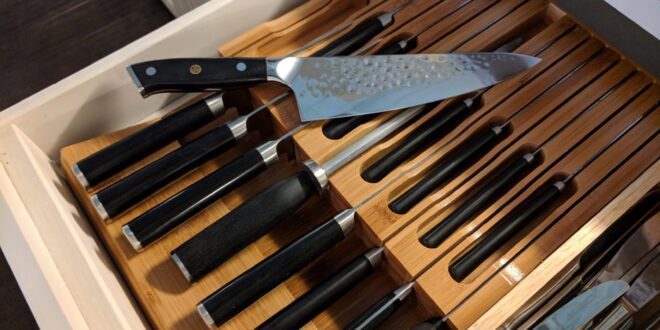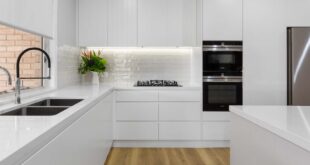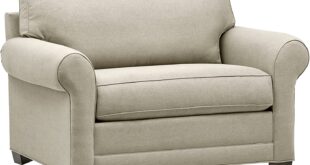Introduction: A Sanctuary for Your Steel
Ah, the kitchen. A place of culinary creations, family gatherings, and… chaotic countertop clutter? If you’re nodding along, especially when it comes to your precious knives, then welcome! You’ve stumbled upon a solution that’s as elegant as it is practical: the knife block drawer insert. It’s not just about tidying up; it’s about creating a sanctuary for your steel, a haven of organization that transforms your cooking experience from frazzled to focused.
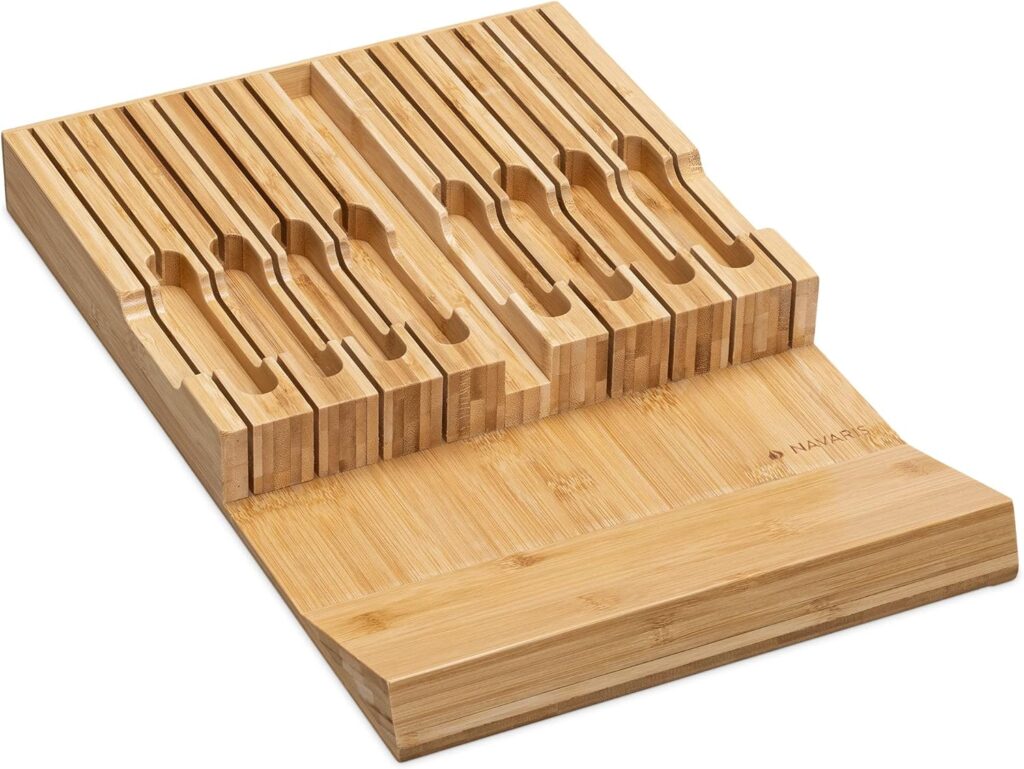
For too long, we’ve accepted the countertop knife block as the only option. Bulky, space-hogging, and sometimes, frankly, a bit of an eyesore. But what if there was a better way? A way to keep your knives safe, sharp, and accessible, all while freeing up valuable counter space? That’s where the magic of the knife block drawer insert comes in.
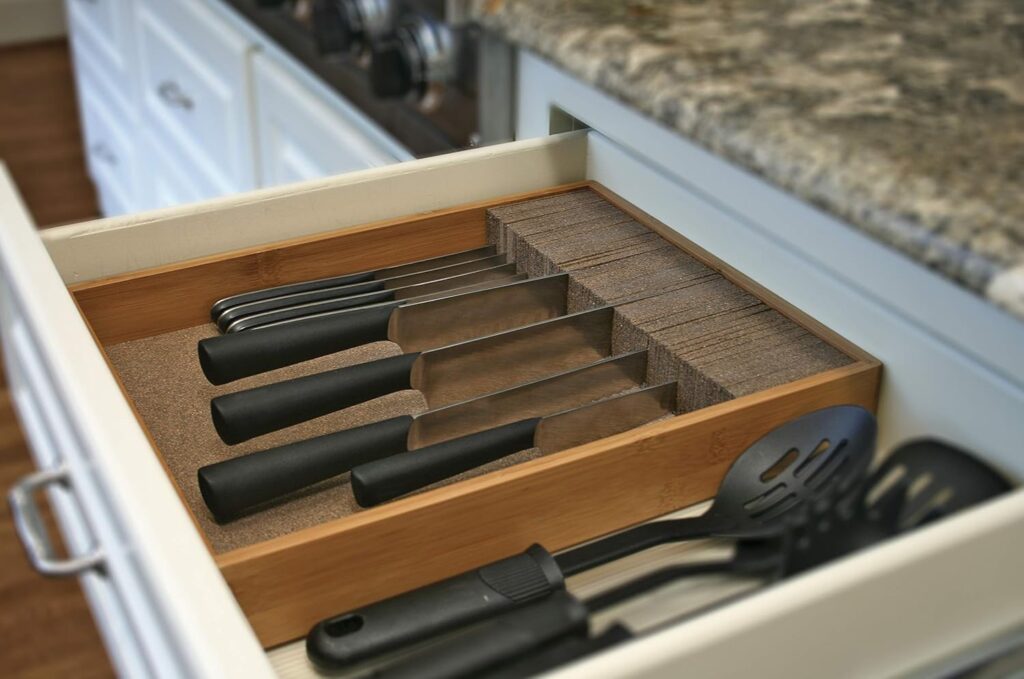
Why Ditch the Countertop Block? Unveiling the Benefits
Let’s be honest, countertop knife blocks have their downsides. They take up precious real estate, can be difficult to clean (leading to potential bacteria buildup!), and often, simply don’t fit well with modern kitchen aesthetics. Here’s a closer look at why making the switch to a drawer insert can be a game-changer:
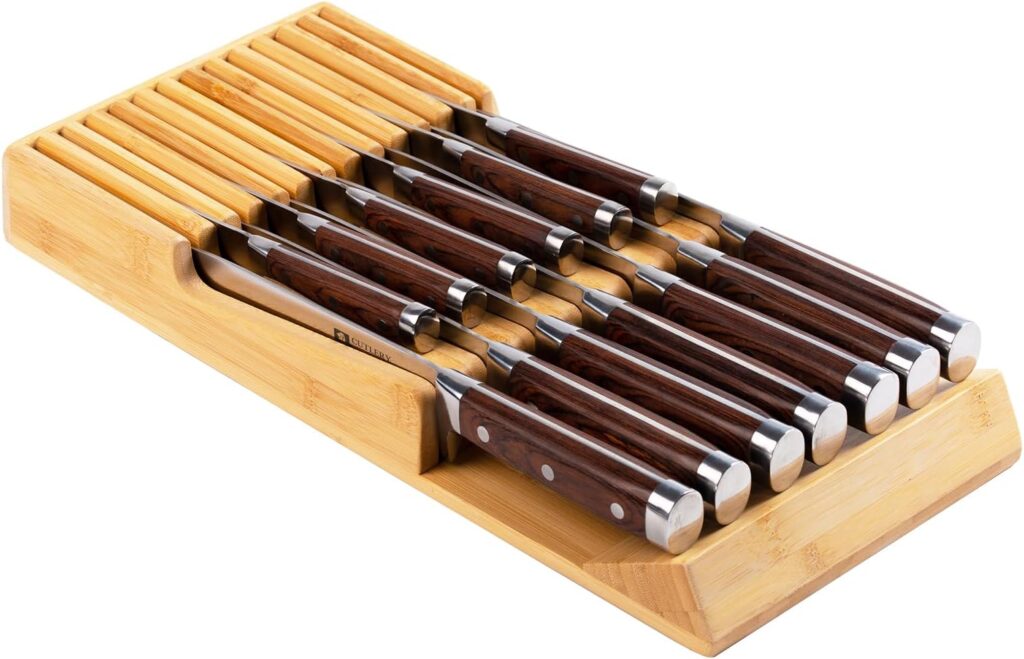
- Space Liberation: This is the big one. Counter space is a premium in any kitchen, and a bulky knife block is a major offender. Reclaiming that space opens up possibilities for food prep, small appliances, or simply a cleaner, more streamlined look. Imagine the possibilities!
- Enhanced Safety: Loose knives in drawers are a recipe for disaster (pun intended!). A drawer insert provides a dedicated, secure spot for each knife, preventing accidental cuts and protecting the blades from damage. Think of it as a miniature fortress for your culinary arsenal.
- Improved Hygiene: Countertop knife blocks can be breeding grounds for bacteria if not cleaned regularly. Drawer inserts, especially those made from easy-to-clean materials like bamboo or plastic, offer a more hygienic storage solution. Plus, enclosed in a drawer, they’re shielded from dust and airborne contaminants.
- Blade Protection: Constant bumping and grinding against other utensils can dull your knives. A properly designed drawer insert keeps each knife separate, preventing blade damage and extending their lifespan. Sharp knives are safe knives!
- Aesthetic Appeal: Let’s face it, some countertop knife blocks are just plain ugly. A drawer insert offers a clean, minimalist look that complements any kitchen style. It’s organization with a touch of sophistication.
- Organization & Accessibility: No more rummaging through a drawer full of mismatched utensils! A knife block drawer insert provides a clear, organized layout, making it easy to find the right knife for the job. Efficiency at your fingertips!
Choosing the Right Knife Block Drawer Insert: A Buyer’s Guide
Okay, you’re convinced. A knife block drawer insert is the answer to your organizational prayers. But with so many options available, how do you choose the right one? Here’s a breakdown of the key factors to consider:
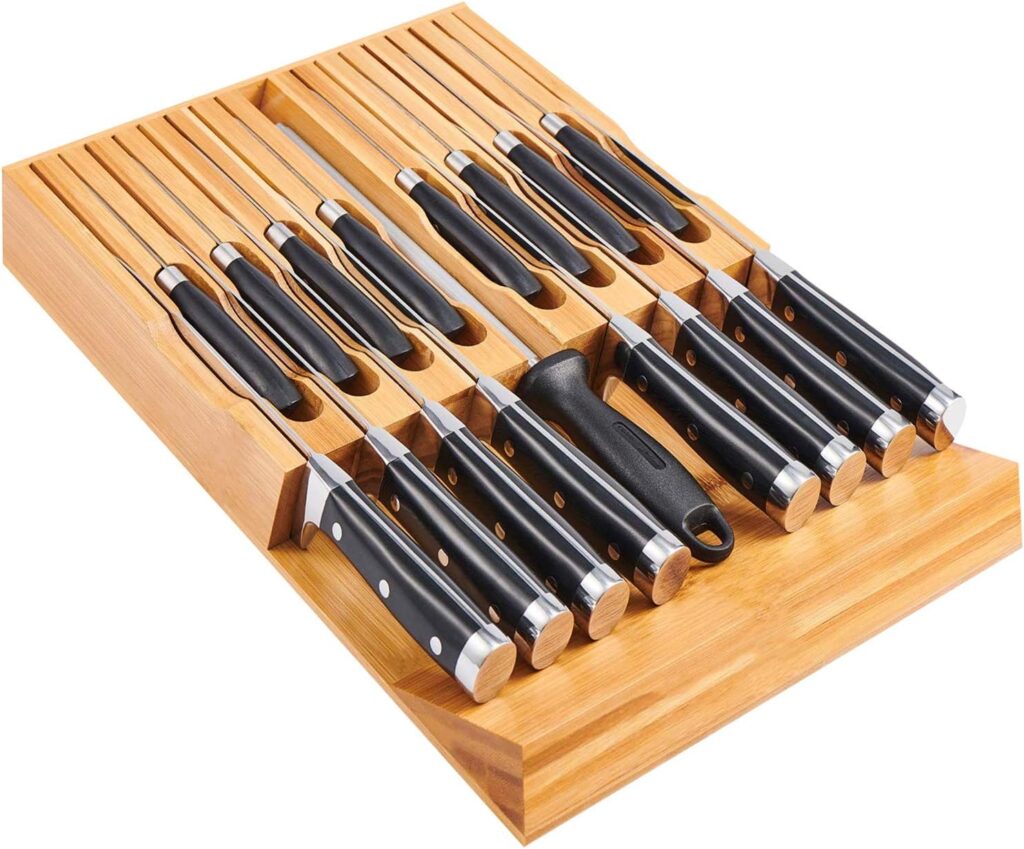
1. Drawer Size and Configuration
This is the most crucial factor. Before you even start browsing, measure your drawer’s internal dimensions (length, width, and depth). You need to ensure the insert will fit comfortably, with enough clearance to open and close the drawer smoothly. Consider the shape of your drawer – is it a standard rectangle, or are there any unusual angles or obstructions? Also, think about the depth. Deeper drawers allow for larger knife storage, while shallower drawers may require a more compact design.
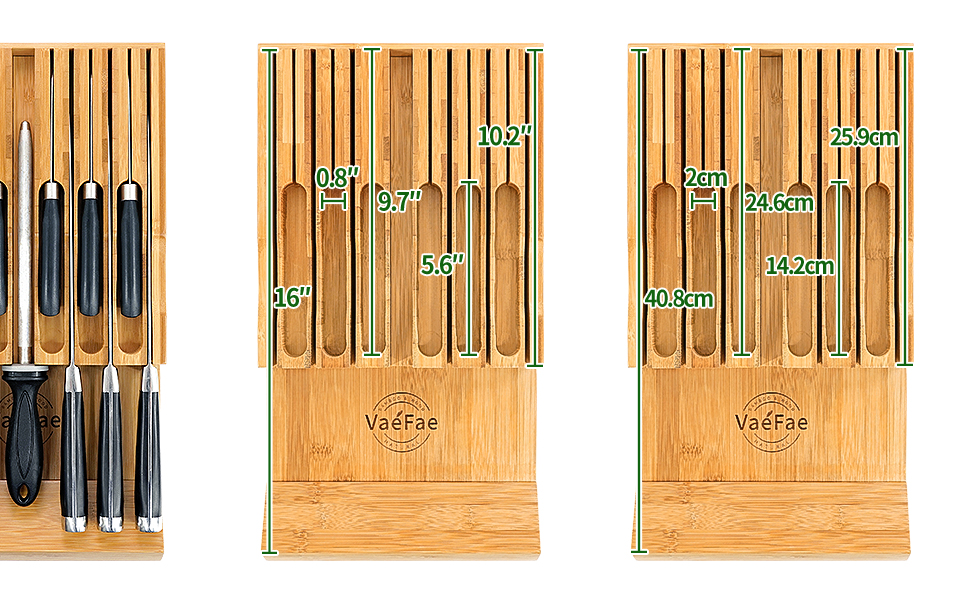
Pro Tip: It’s always better to err on the side of caution and choose an insert that’s slightly smaller than your drawer. You can always fill the extra space with non-slip liner or other organizational tools.
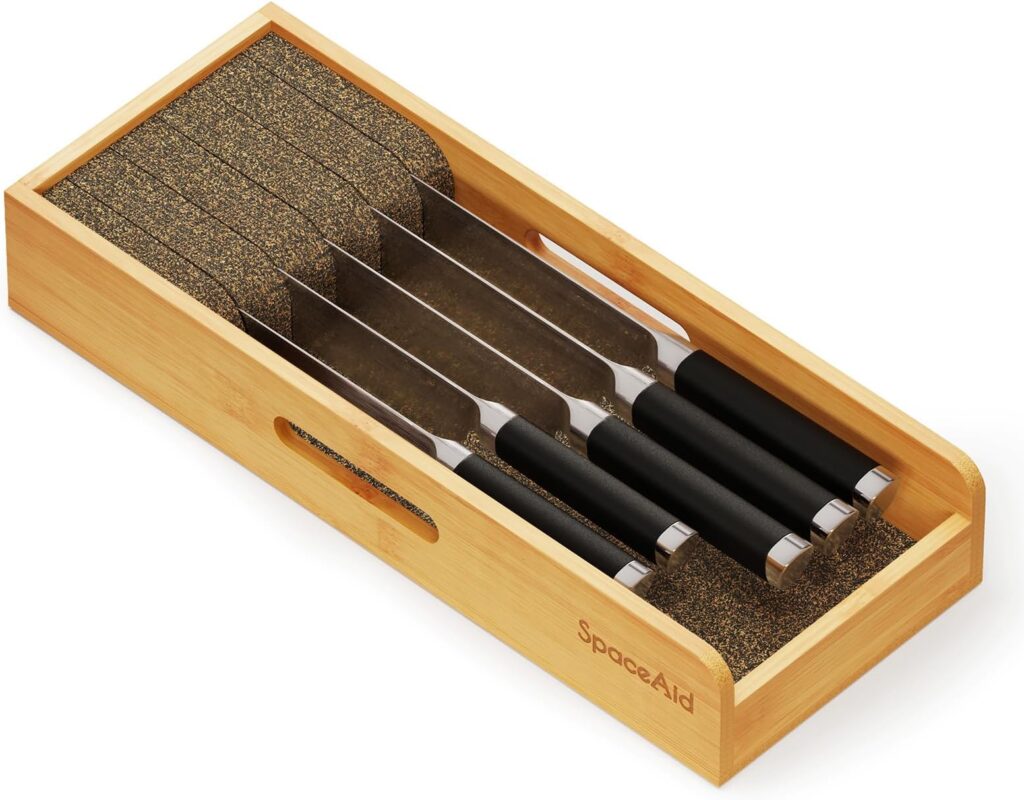
2. Knife Capacity and Types
How many knives do you own, and what types of knives are they? A paring knife requires less space than a chef’s knife or a bread knife. Consider the number of slots and their sizes. Do you need dedicated slots for steak knives, carving knives, or sharpening steels? If you’re a serious home cook with a large collection, you’ll need a larger insert with ample capacity. If you only have a few essential knives, a smaller, more streamlined insert may suffice.
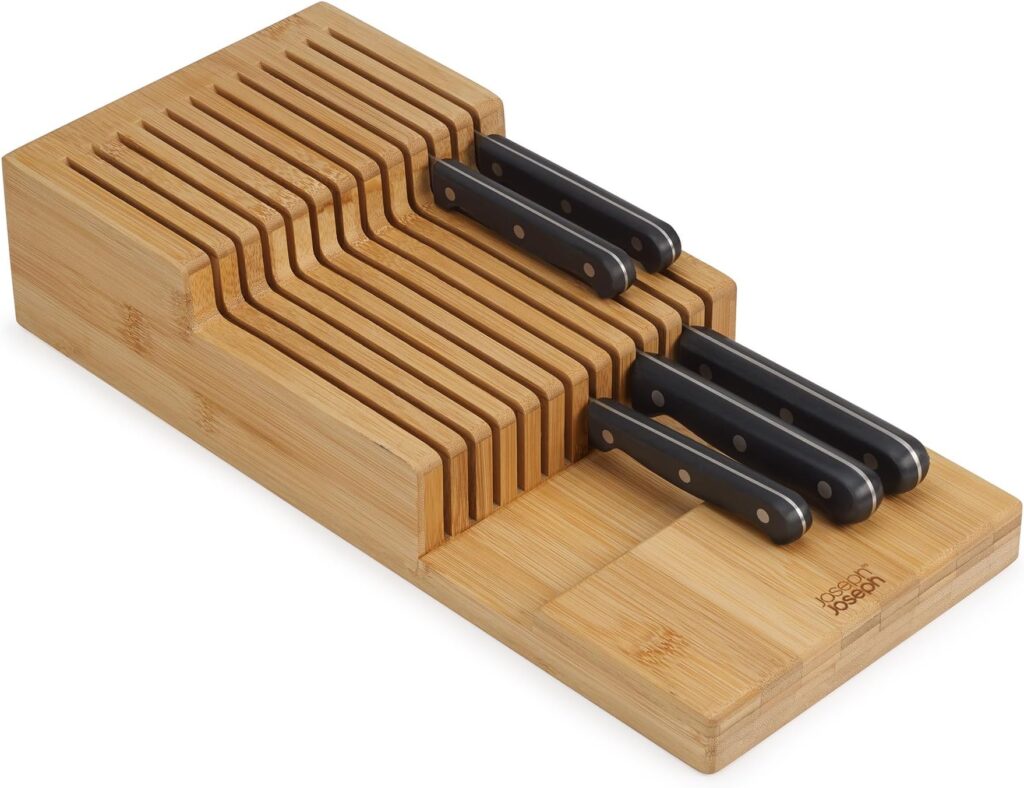
Think about your future needs, too. Are you likely to add to your knife collection in the future? It’s better to choose an insert with a little extra capacity than to find yourself running out of space later on.
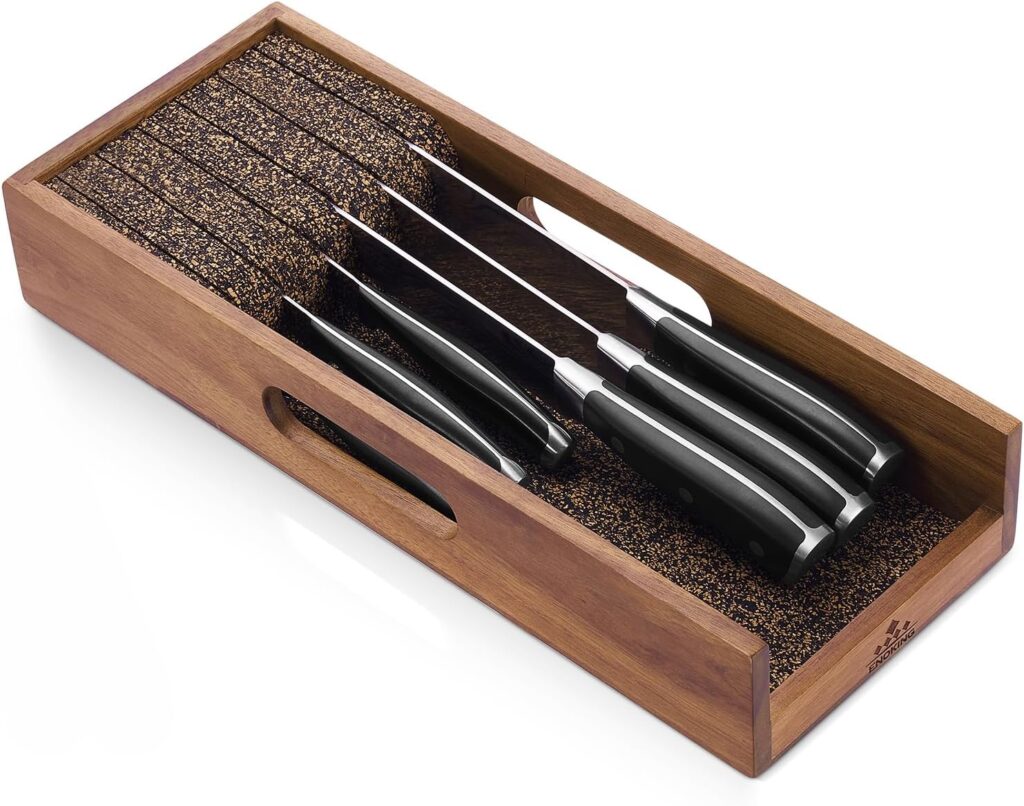
3. Material: Durability and Aesthetics
Knife block drawer inserts are typically made from wood (often bamboo), plastic, or a combination of both. Each material has its pros and cons:
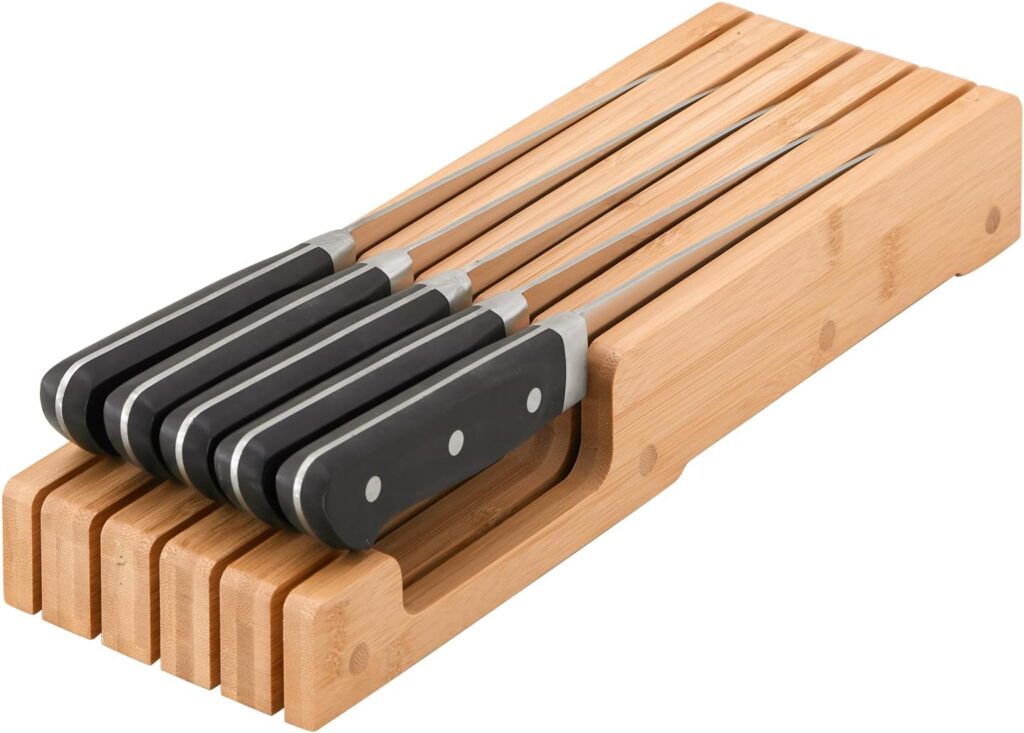
- Bamboo: A popular choice for its durability, sustainability, and natural beauty. Bamboo is also naturally antimicrobial, making it a hygienic option for storing knives. It’s generally more expensive than plastic but offers a premium look and feel.
- Wood (Other than Bamboo): Offers a classic look and can be stained or painted to match your kitchen decor. However, wood can be more prone to moisture damage and may require more maintenance than bamboo or plastic.
- Plastic: A budget-friendly option that’s easy to clean and durable. Plastic inserts are often dishwasher-safe, making them a convenient choice for busy cooks. However, they may not be as aesthetically pleasing as wood or bamboo.
- Combination Materials: Some inserts combine different materials, such as a bamboo frame with plastic knife slots. This can offer the best of both worlds – the durability and beauty of bamboo with the affordability and ease of cleaning of plastic.
Consider the overall aesthetic of your kitchen when choosing a material. If you have a modern, minimalist kitchen, a sleek plastic insert may be a good choice. If you prefer a more traditional look, a wooden or bamboo insert may be a better fit.
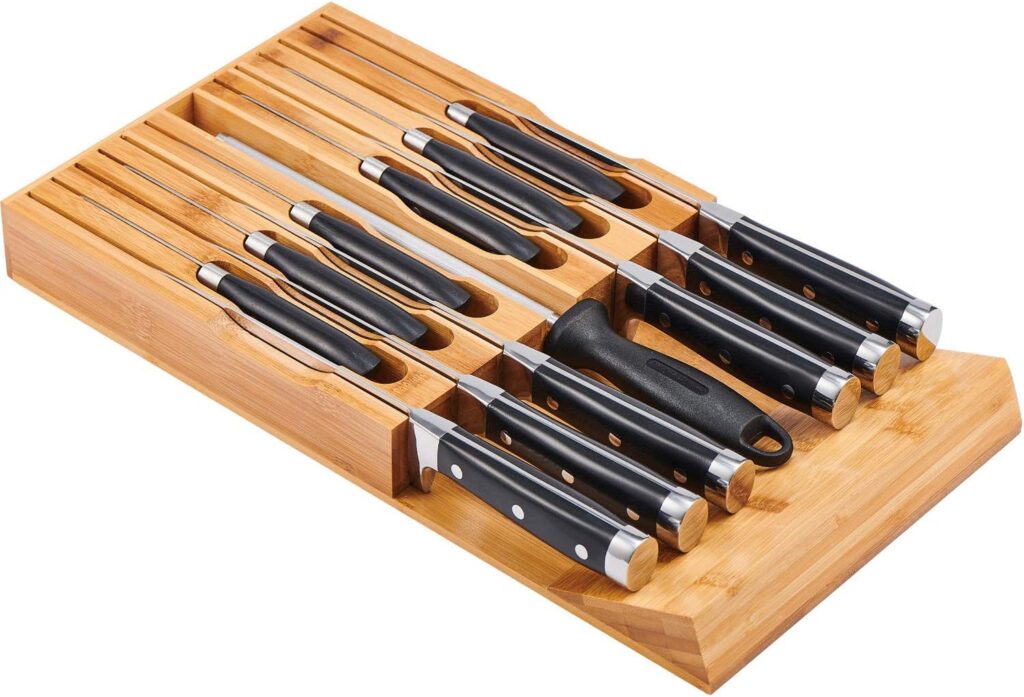
4. Design and Features
Beyond the basic functionality, consider the design and features of the insert. Are the knife slots angled for easy access? Does the insert have a non-slip base to prevent it from sliding around in the drawer? Some inserts even have built-in sharpening steels or dedicated slots for other kitchen tools.
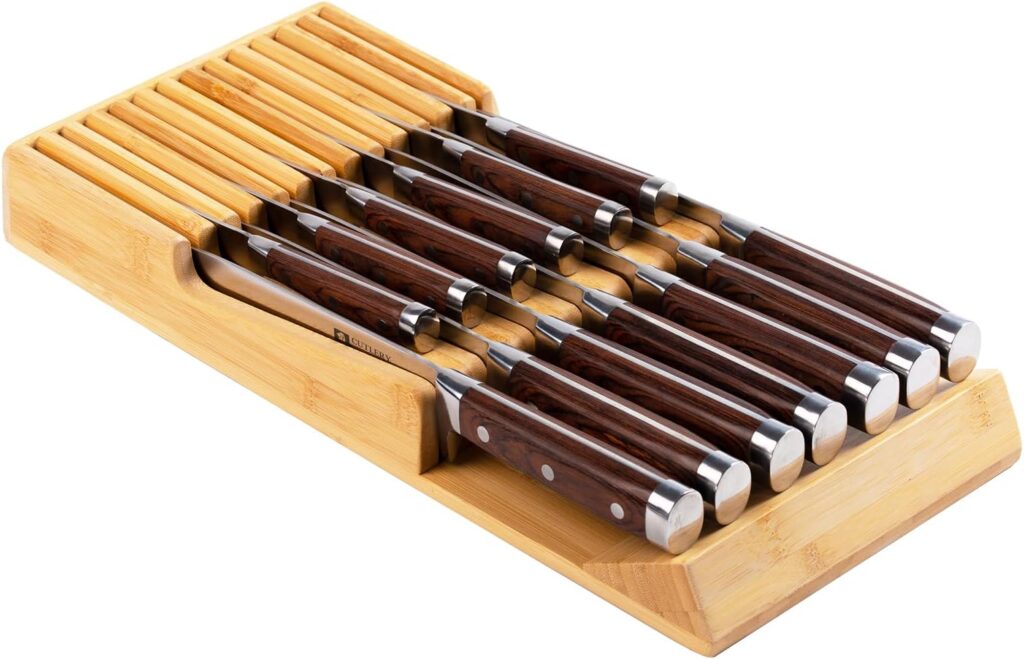
- Angled Slots: Make it easier to grab and replace knives, especially in deeper drawers.
- Non-Slip Base: Prevents the insert from sliding around, keeping your knives secure.
- Built-in Sharpening Steels: A convenient feature for maintaining your knives’ sharpness.
- Dedicated Slots for Other Tools: Some inserts include slots for scissors, peelers, or other kitchen essentials.
- Removable Slots/Dividers: Allows for customization and accommodating knives of varying sizes.
5. Price and Value
Knife block drawer inserts range in price from budget-friendly plastic models to high-end bamboo designs. Consider your budget and prioritize the features that are most important to you. Don’t necessarily go for the cheapest option – a well-made insert will last longer and provide better protection for your knives.
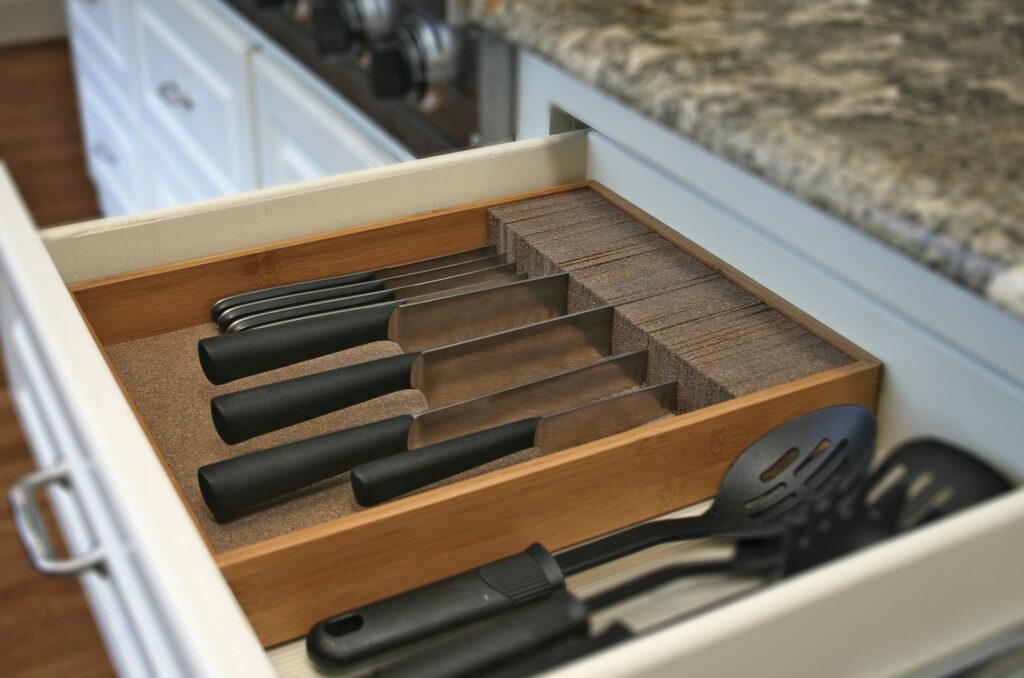
Read reviews and compare prices from different retailers before making a purchase. Look for inserts that offer a good balance of quality, features, and price.
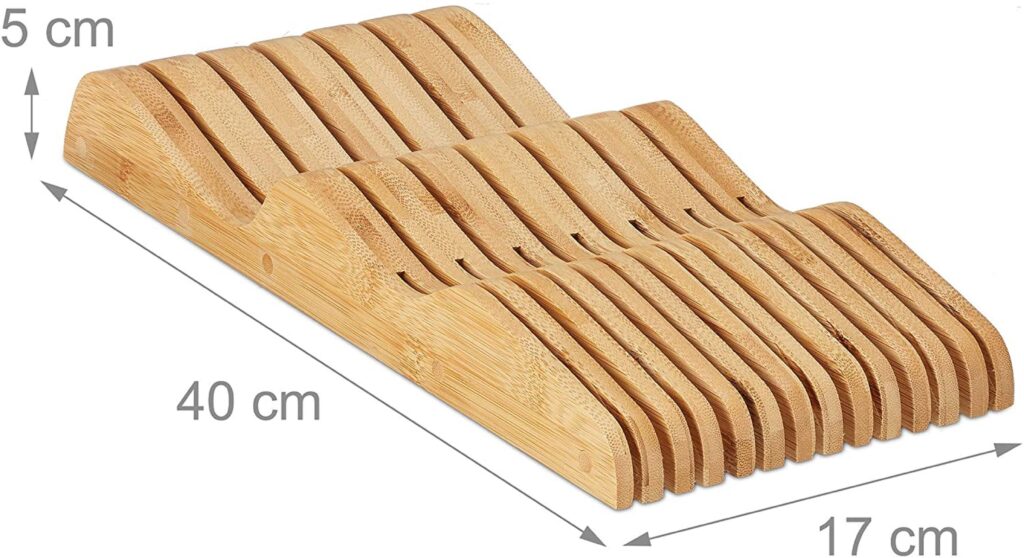
Installation and Maintenance: Keeping Your Insert in Tip-Top Shape
Installing a knife block drawer insert is usually a breeze. Most inserts are designed to simply drop into your drawer. However, here are a few tips to ensure a smooth installation and proper maintenance:
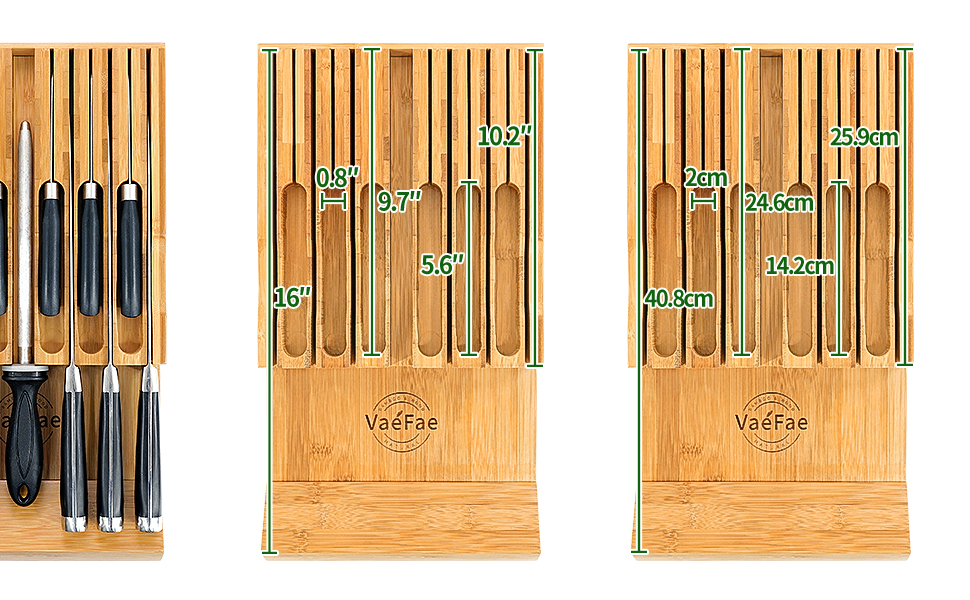
Installation:
- Clean the Drawer: Before installing the insert, thoroughly clean the inside of your drawer to remove any dust, crumbs, or debris.
- Add Non-Slip Liner (Optional): If the insert doesn’t have a non-slip base, consider adding a layer of non-slip liner to the bottom of the drawer to prevent it from sliding around.
- Position the Insert: Carefully position the insert in the drawer, ensuring that it fits comfortably and doesn’t interfere with the drawer’s opening and closing mechanism.
- Load the Knives: Place your knives into the designated slots, ensuring that the blades are facing down and the handles are easily accessible.
Maintenance:
- Regular Cleaning: Wipe down the insert regularly with a damp cloth to remove any spills or crumbs. For wooden inserts, avoid using excessive water, as this can damage the wood.
- Deep Cleaning: Periodically, remove the insert from the drawer and give it a more thorough cleaning. For plastic inserts, you can usually wash them in the dishwasher. For wooden inserts, hand wash them with mild soap and water, and be sure to dry them thoroughly.
- Address Moisture: Moisture can be a breeding ground for bacteria. If you notice any moisture buildup in the drawer, address it promptly. You can use a dehumidifier or place a desiccant packet in the drawer to absorb excess moisture.
- Sharpening: Regularly sharpen your knives to maintain their performance and prevent them from becoming dull. A dull knife is a dangerous knife!
Beyond the Basics: Creative Uses and DIY Solutions
While commercially available knife block drawer inserts are a convenient option, you can also get creative and create your own custom solutions. Here are a few ideas:
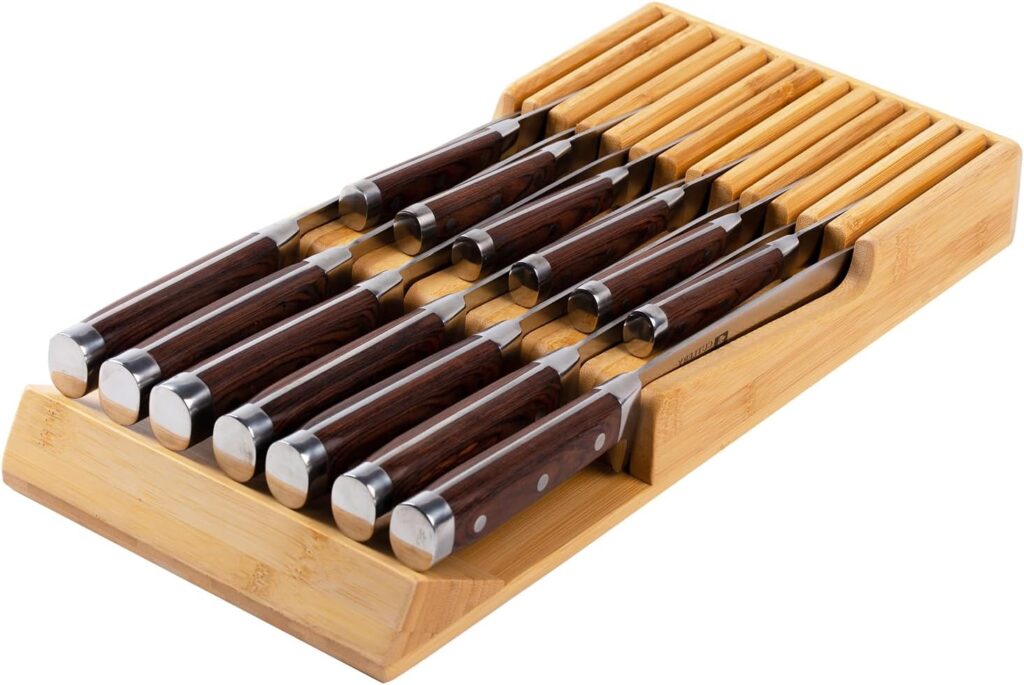
DIY Drawer Inserts:
- Foam Inserts: Cut foam inserts to fit your drawer and create custom knife slots. This is a budget-friendly option that allows for maximum customization.
- Wooden Dividers: Use wooden dividers to create compartments for your knives. This is a more time-consuming option, but it can result in a beautiful and functional drawer insert.
- Magnetic Strips: Attach magnetic strips to the inside of your drawer to hold your knives in place. This is a space-saving option that’s ideal for small kitchens.
Creative Uses for Existing Inserts:
- Utensil Organizer: Use a knife block drawer insert to organize other kitchen utensils, such as spatulas, whisks, and spoons.
- Craft Supply Storage: Use a knife block drawer insert to store craft supplies, such as paintbrushes, scissors, and glue sticks.
- Tool Organizer: Use a knife block drawer insert to organize tools in your workshop or garage.
Top Knife Block Drawer Insert Recommendations
While the best knife block drawer insert depends on your specific needs and preferences, here are a few popular and highly-rated options:
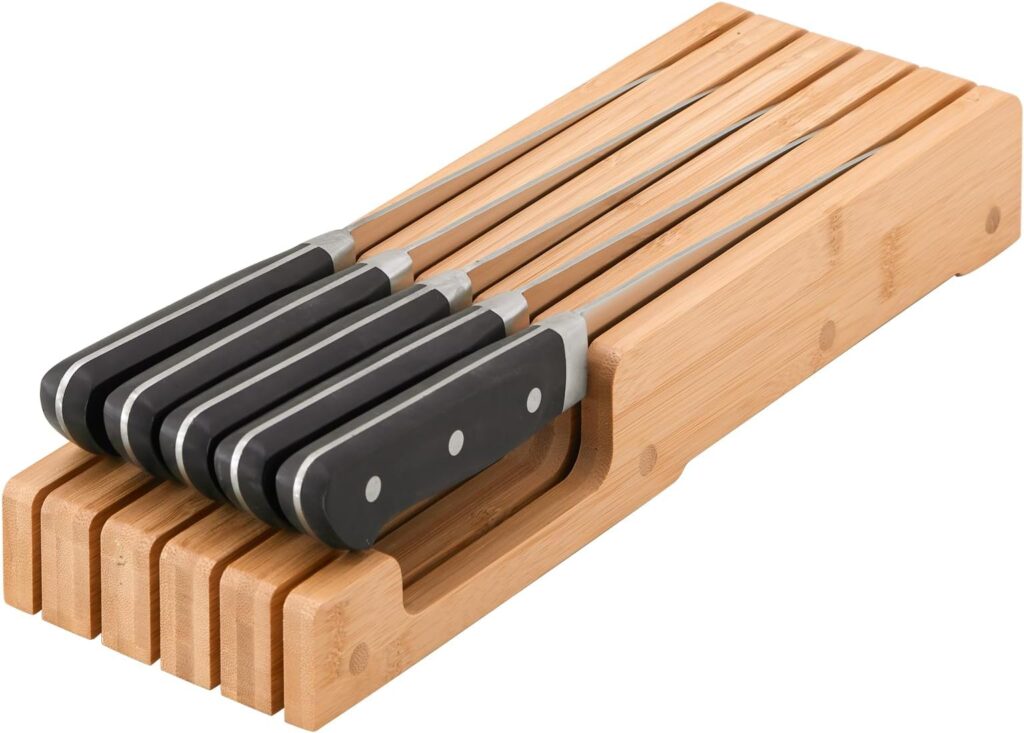
- Wüsthof Knife Insert: Known for its quality and durability, this insert is a favorite among professional chefs.
- Victorinox Knife Block Drawer Insert: A versatile option that can accommodate a variety of knife sizes and shapes.
- Noble Home & Chef Bamboo Knife Block Drawer Insert: An aesthetically pleasing and eco-friendly option made from sustainable bamboo.
- Kitory Universal Knife Block Insert: A flexible option that adapts to your cutlery needs.
- Tupperware Knife Block Insert: A trusted name, perfect for protecting your sharp investment.
Remember to read reviews and compare prices before making a purchase. Consider your drawer size, knife collection, and budget when choosing the right insert for you.
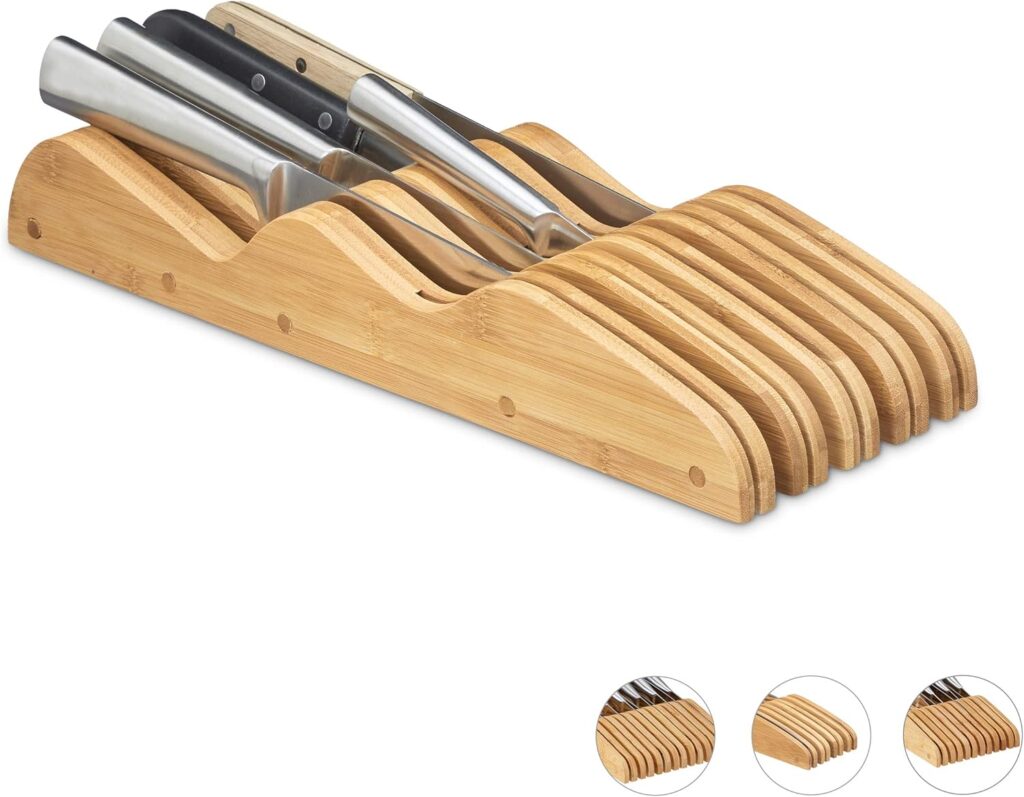
Conclusion: A Kitchen Transformed
The humble knife block drawer insert – a simple solution with the power to transform your kitchen. It’s more than just organization; it’s about creating a safer, more efficient, and more enjoyable cooking experience. By freeing up counter space, protecting your knives, and improving hygiene, a drawer insert can help you unlock your culinary zen and unleash your inner chef.
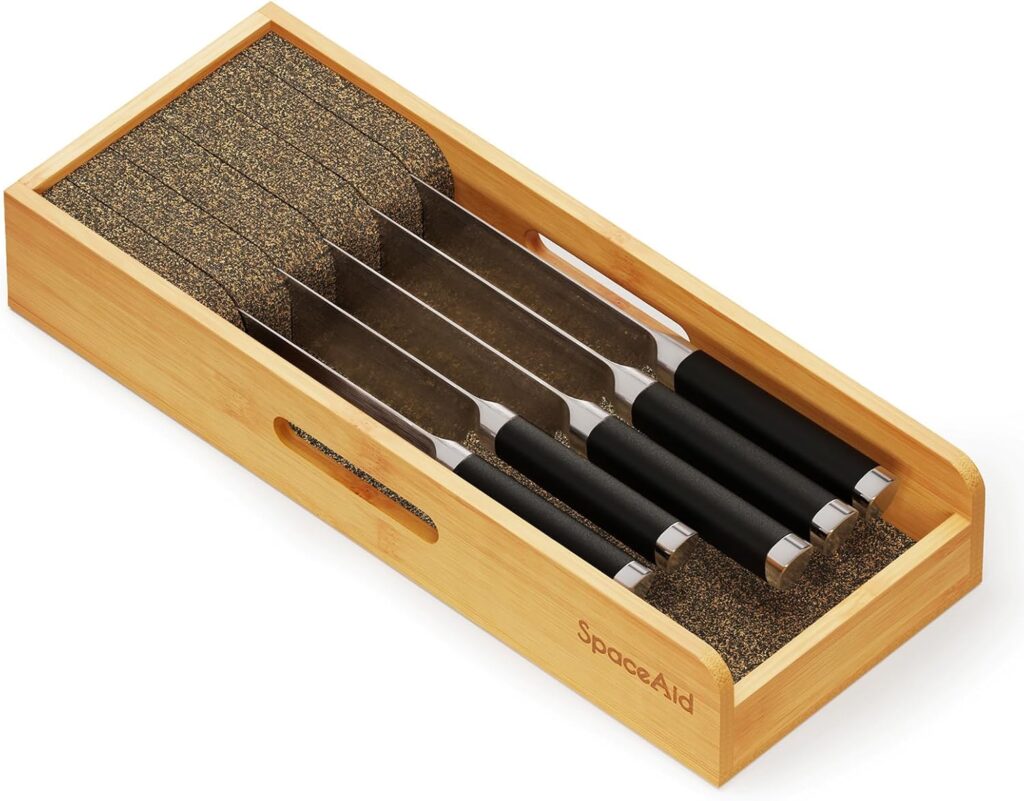
So, ditch the bulky countertop block and embrace the elegance and functionality of a knife block drawer insert. Your knives (and your kitchen) will thank you for it!
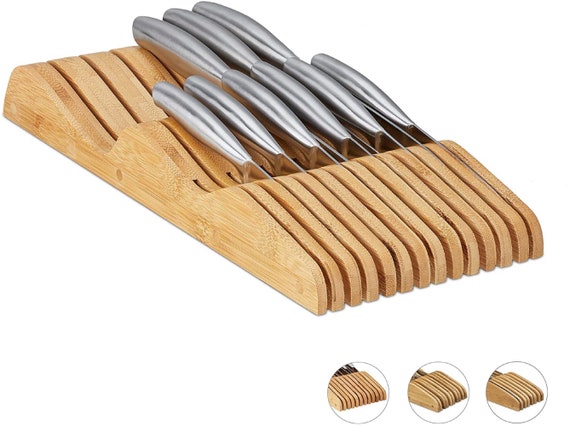
 Nimila
Nimila
